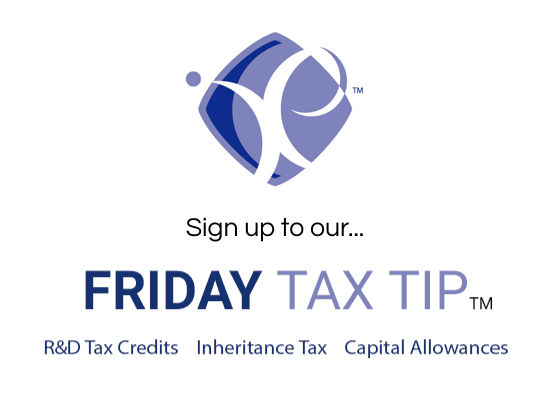Digital tax reporting is no longer a distant concern for landlords. It’s coming, and sooner than many expected.
Making Tax Digital (MTD) for Income Tax Self Assessment (ITSA) will begin rolling out from April 2026, and with mandatory software, added costs, and new compliance pressures, landlords must start preparing now or risk being caught off guard.

(Read Time: Approx. 4 minutes)
Topics Discussed:
- What MTD means for landlords and when it will apply based on income thresholds.
- Key software requirements, expected costs, and practical preparation tips.
What is Making Tax Digital for Landlords?
MTD is a government-led initiative aimed at modernising the tax system.
From 6 April 2026, landlords operating as sole traders with gross combined income (from rental and self-employment) over £50,000 must begin submitting quarterly updates to HMRC using approved digital software.
This replaces the traditional annual Self Assessment return for those affected.
If your qualifying income exceeds £30,000, you’ll fall into the next group by April 2027.
The final rollout (for those earning over £20,000) begins in April 2028.
Income from employment or pensions doesn’t count; only property and self-employed income do.
Mandatory Software, Mandatory Costs
This shift comes with a price tag.
HMRC estimates that landlords will spend around £480 annually to comply with MTD: a combination of software costs (typically starting at £130) and the time required for training and admin (about £350 worth).
Software like QuickBooks, Xero, and Sage offer compliant tools.
Landlords with smaller portfolios may prefer bridging software, which allows them to use familiar spreadsheets while still meeting MTD requirements.
Who Needs to Register, and When?
HMRC will identify eligible landlords based on their 2024-25 tax returns.
If your income meets the threshold of £50,000, expect a notification from HMRC ahead of the 2026-27 tax year.
You’ll need to have your MTD-compliant software up and running before that tax year begins.
Importantly, if you jointly own property (e.g. 50/50 with a partner), only your share counts towards the income threshold.
Also, properties held through limited companies are exempt from MTD for Income Tax, though they still face separate reporting obligations for Corporation Tax.
New Landlords: What to Know
If you’re just stepping into the world of property letting, you won’t need to comply with MTD until after your first full tax return has been filed.
HMRC will assess your situation from there and let you know when MTD obligations kick in.
MTD vs Property Management Software
There’s some confusion around whether property management tools like Landlord Vision or Alphaletz are MTD-ready.
They’re not, at least not yet. While they help with rent collection, tenant communication, and property maintenance, they can’t currently file digital tax returns.
HMRC-approved accounting software is mandatory for submissions. You can find a full list of this software here.
That said, many of these platforms are working towards MTD compli
nce ahead of 2026.
Why This Change Is Happening
The push behind MTD is about reducing the tax gap: the difference between tax theoretically owed and what’s actually paid.
For 2022-23, this gap was nearly £40 billion. A significant chunk comes from self-assessed taxpayers, which includes landlords.
By requiring digital record-keeping and regular submissions, HMRC aims to cut down on underreporting and mistakes, both of which contribute to revenue loss.
What Happens If You Ignore MTD?
There will be penalties for non-compliance. A points-based system will apply from April 2026, with fines imposed once a threshold is reached.
The later you are with your returns or payments, the harsher the penalties.
This system is designed to be more proportionate than previous penalty regimes, but it’s still best to avoid them altogether.
Preparing for MTD: What You Should Do Now
- Check Your 2024-25 Income
If you earn more than £50,000 from property and self-employment combined, you’re in the first wave. Confirm your status early so you can plan ahead.
- Choose Your Software
Look into MTD-compliant software like Hammock or speak to your accountant for tailored advice. If you want to get used to digital reporting before it becomes mandatory, start using the software during the 2025-26 tax year.
- Go Digital with Your Records
Paper ledgers won’t cut it anymore. Start keeping digital records of all rental income and expenses. The sooner you switch, the smoother your transition will be.
- Talk to Your Letting Agent
If you use one, find out how they’ll support your MTD obligations. Will they provide digital receipts? Will they help with expense tracking?
- Separate Your Finances
Open a dedicated bank account for your rental income and expenses. This makes digital reconciliation much easier, especially when integrating your accounts with software.
Summary
Making Tax Digital for landlords is no longer a vague future policy: it’s a confirmed reality starting April 2026.
Whether you own one property or a portfolio of fifty, the new rules will impact how you manage your tax affairs.
The key is to start early is choose the right software, digitise your records, and understand your obligations well before HMRC starts knocking.
Get in touch with Tax Expert today to make the transition as smooth and cost-effective as possible.
Fill out our form here for any questions, email us at info@taxexpert.co.uk, or message us on our WhatsApp for out of office hours.
Kind regards,
Ilyas Patel

